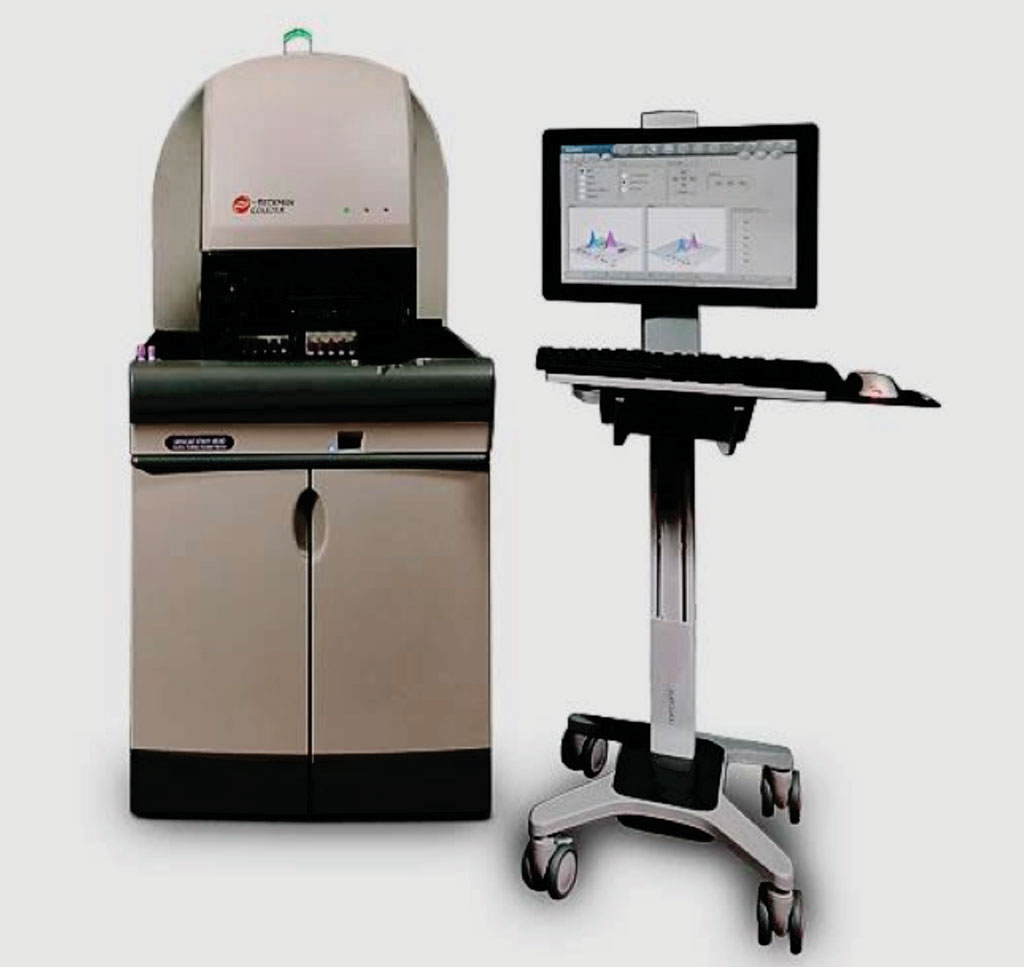Lab Tests Discriminate Bacterial from Nonbacterial COPD Exacerbations
By LabMedica International staff writers
Posted on 08 Dec 2016
The discrimination of bacterial from nonbacterial acute exacerbations of chronic obstructive pulmonary disease (AECOPD) is difficult, causing antibiotics overuse and bacterial resistance. Sputum cultures are of limited use because results take time.Posted on 08 Dec 2016
Acute exacerbation of COPD also known as acute exacerbations of chronic bronchitis (AECB) is a sudden worsening of COPD symptoms such as shortness of breath, quantity and color of phlegm that typically lasts for several days. It may be triggered by an infection with bacteria or viruses or by environmental pollutants.

Image: The UniCel DxH 800 Coulter Cellular Analysis System (Photo courtesy of Beckman Coulter).
Scientists at the Franciscus Gasthuis (Rotterdam, The Netherlands) and their colleagues usually evaluate AECOPD using the laboratory parameters of leucocytes concentration and C-reactive protein. They have now evaluated additional tests to discriminate bacterial versus nonbacterial AECOPD: 5-part leukocyte differentiation (hematology analyzer), leukocyte differentiation using flow cytometry (Leukoflow, Cytodiff: Beckman Coulter, Brea, CA, USA), Leuko64 kit, and procalcitonin. Retrospectively, patients were classified as bacterial or nonbacterial AECOPD. Receiver operating characteristic (ROC) analyses tested how the additional tests discriminate these groups.
The team classified 22 AECOPD as bacterial and 23 as nonbacterial. From the additional tests, basophil percentage (Cytodiff) has superior AUC (0.800). At a cutoff resulting in equal to or more than 90% sensitivity, neutrophil/lymphocyte ratio (AUC: 0.755) and CD4-positive T cells (Leukoflow, AUC: 0.747) have the highest specificity (57%). Both neutrophil mean volume and standard deviation measured by the Cell Population Data from a Beckman Coulter DxH800 hematology analyzer had good combined sensitivity and specificity (91% sensitivity, 69% specificity). Addition of leukocyte populations and procalcitonin to CRP in regression models (AUC: 0.907/0.876/0.890) increased specificity compared to CRP alone (71% or 73% versus 39%).
The authors concluded that no additional test has sufficient accuracy on its own to predict bacterial AECOPD. Combining CRP with several parameters from the additional tests may improve this. The study was published in the December 2016 issue of the International Journal of Laboratory Hematology.
Related Links:
Franciscus Gasthuis
Beckman Coulter














